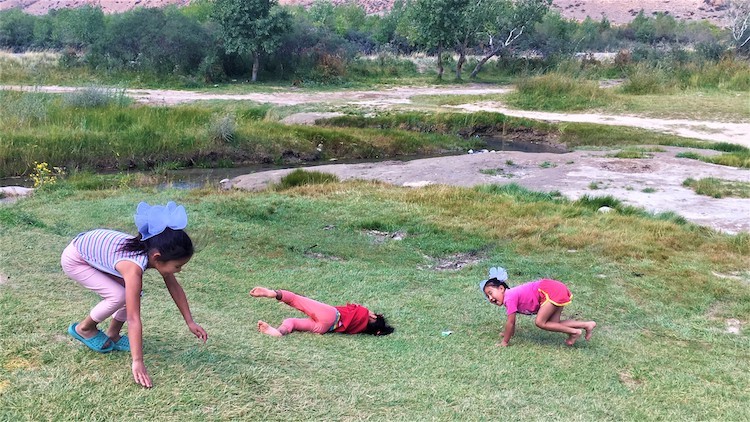By Sehar Naz Janani
NARYN, Kyrgyzstan (IDN) – His pale skin, teary eyes, shivering body and trembling voice added to the air of grave solemnity pervading the room.
Breaking the dead silence, his mouth slowly started murmuring, “I am an orphan… But, I have a sister… She beats me every now and then” and added, “She also abuses me emotionally. I could not take it anymore.
The 13-year-old boy from Naryn, Kyrgyzstan is taking temporary shelter in the only Crisis Centre for children of the region.
Such situations are quite familiar to Kaparova Jyldyz Joldubaeva. An employee at the State Organization of Support for Women and Children in Kyrgyzstan, she mostly attended to the abusive and vulnerable cases.
In 2012, she was on a visit to Latvia for professional development training. A civil society activist and well-known social worker in Kyrgyzstan, she reflected upon the conditions in her home country while visiting the Crisis and Rehabilitation Centres of Latvia.
“I always encountered the need to have temporary shelters for victims of abuse until their permanent housings were decided by the government,” she recalls with utter disappointment. “It is not reasonable for a victim to live in an abusive environment until the case is under investigation,” she adds.
Jyldyz decided to quit her government job and established the Crisis Centre in 2014 named “Goodwill” in the Naryn region as she realized the urgent need to launch this project by herself.
“I applied for almost two-to-three years for funds to launch this project,” she recalls. “However, I was able to fulfil my vision of supporting vulnerable layers of society only until the European Union stepped in with support,” she adds.
As studies by the United Nations Children’s Fund (UNICEF) point out, almost 73% of the children suffer abuse and 83% face violence. It means that 3 out of 4 children in Kyrgyzstan fall under the category of “abusive childhood”.
Jyldyz recalls: “Once, a mother brought her son from Jalal-a-bad region to abandon him at our Centre. His step-father had abused him sexually and beat him nearly to death.” Slowly her eyes turned teary, “He was admitted to hospital for 10 days as he could not even walk on his own feet”.
According to UNICEF, almost 11,000 children are admitted to residential care institutions even though most of them have one of their parents alive. Also, these institutions are one of the listed places where violent cases are usually being reported.
The existing stigma about sexual abuse in Kyrgyz culture makes things worse. It is almost impossible for children to speak about the violence that they had to go through because of the inhumane practices of brutal adults. Considering this culture, most of the cases go unreported.
“We are the only organization in 134 villages of the Naryn region which address the traumas of children,” she continues.
Goodwill addresses such cases by providing accommodation, food and other necessities to the victims while dealing with local government and police to investigate the issue to its core. The Centre also tries to ensure the placement of children in safe hands with the support of other NGOs and government.
She lowers her voice and continues with embarrassment: “It is a shame that we can only host 14 victims at a time”.

< A woman with her child in the street of Naryn. Credit: Sehar Naz Janani
Raising her voice, she adds “The availability of beds and limitation of funds restricts us to assist more sufferers of ferocity”.
Goodwill has engaged with 96 cases of abused children until now. “We could have been able to help more only if the funds and resources were available”, she says.
Kyrgyzstan has been the signatory of the Convention of the Rights of the Child for 25 years now. Yet the country’s child abuse rates are high. Even the Constitution’s Articles 12 and 16 support the children rights and highlight the significance of international treaties. These facts encourage to criticize the law and order of the country.
Studies also demonstrate that most of the abuse cases are reported from rural and culturally-centric communities of the nation. Even if any of the cases are luckily discovered and reported by the victims, there are no structured systems developed to address the issue properly. This calls for the need for a stronger civil society, which is absent in the case of Kyrgyzstan.
Optimism is the hallmark of her personality. Her voice of conviction fills the room, “We can save the children, only if we can educate the adults”. And with more determination, she adds, “We should even educate the children about their basic rights”.
“Yes, we can do it.”
Note: The images are randomly clicked by the author on the streets of Naryn. The children in the images are not the victims of abuse.
* The writer is a Communications and Media student at the University of Central Asia in Naryn.
Read: A joint photo project is launched to reflect on Kyrgyzstan’s past and future – its children. [IDN-InDepthNews – 09 December 2019]
Photo: Children playing on the riverside in Naryn. Credit: Sehar Naz Janani
IDN is flagship agency of the International Press Syndicate.
facebook.com/IDN.GoingDeeper – twitter.com/InDepthNews

